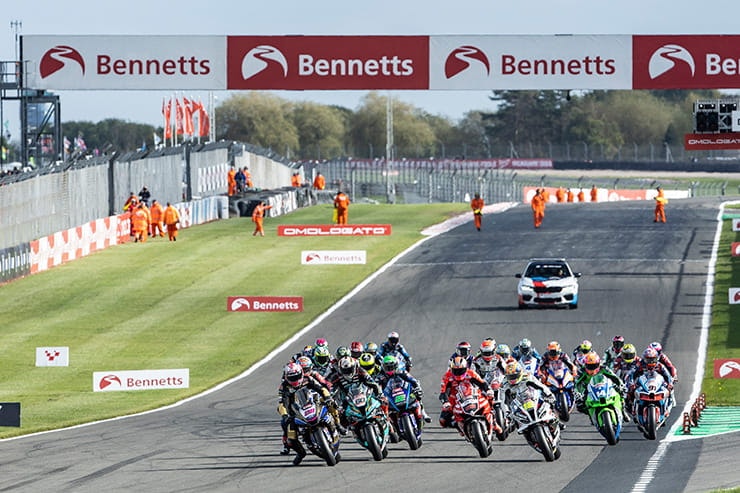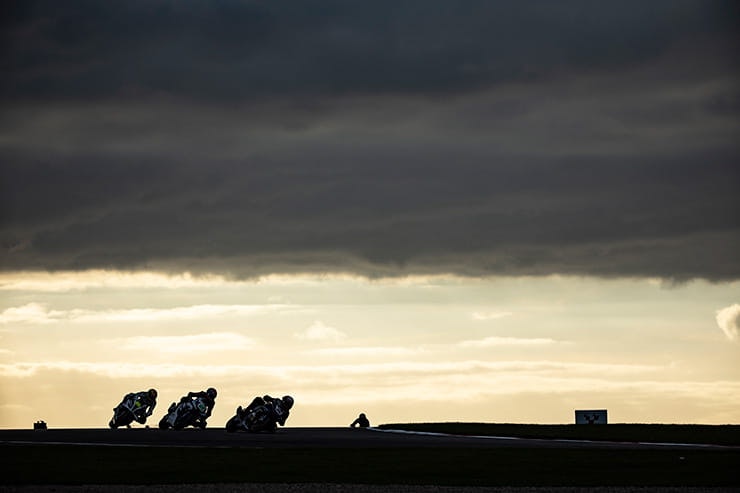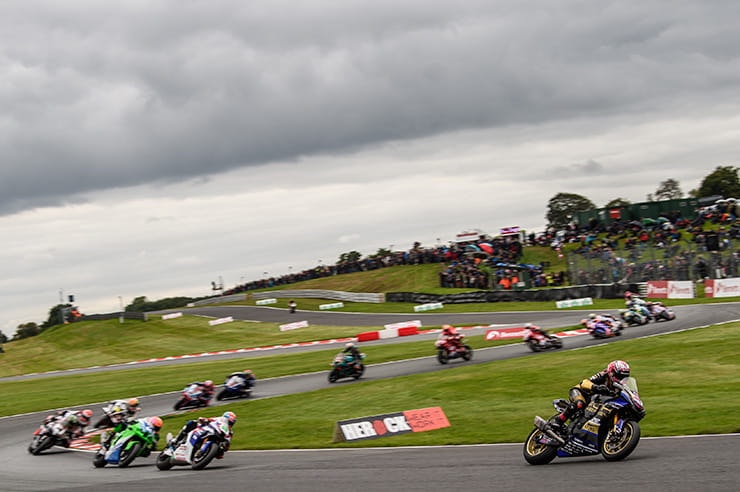BSB Showdown Explained – All you need to know
Senior Social Media Executive.
01.02.2023
What is the Showdown in British Superbikes?
The Bennetts BSB championship runs from April to October and is now split into three separate parts for 2023, after a shake up to what was known as the ‘Showdown’. It now will run ‘The Main Season,’ ‘The Title Showdown’ and ‘The Title Finale’, which will be run at the season crescendo at Brands Hatch. The change from the previous ‘Showdown’ system, which was first introduced in 2010, is designed to recognise season long performance and ideally create the opportunity for more teams and riders to remain in mathematical title contention.
2023 Bennetts BSB Showdown Explained
The Bennetts British Superbike showdown has been part of the championship since 2010, but for 2023 there's a new format, and Michael Mann is joined by Michael Burton to explain what it's all about.
The Showdown has been scrapped for 2023
How does the BSB Showdown work?
For 2023, the major change to how to series will run is the points system. As we knew it, 25 points for a victory and five podium credits are no more. Podium credits have been ditched and will no longer play a part of how a rider can win the Championship. The traditional format where the top 15 finishers are awarded championship points remains, but how will the points alter throughout the season?
Rounds 1 to 8 - The Main Season
Points Structure - 18, 16, 14, 12, 11, 10, 9, 8, 7, 6, 5, 4, 3, 2, 1
Rounds 10 and 11 - The Title Showdown
Points Structure - 25, 22, 20, 18, 16, 14, 12, 10, 8, 6, 5, 4, 3, 2, 1
Round 12 - The Title Finale
Points Structure - 35, 30, 27, 24, 22, 20, 18, 16, 14, 12, 10, 8, 6, 4, 2
Why change the BSB Title Showdown?
While the BSB Title Showdown has its critics, the format has largely served its original purpose well.
Introduced in the wake of Leon Camier’s destruction of the opposition during the 2009 BSB season aboard the GSE Racing Airwaves Yamaha, the Showdown format was designed to keep the title battle alive to the finale in an effort to keep fans invested in a title battle that was likely to go down to the wire.
However, while the format has led to some classic title battles over the years - most notably Tommy Hill’s victory over John Hopkins in 2011 by the smallest of margins - both Tarran Mackenzie and Bradley Ray’s title wins in 2020 and 2021 were largely foregone conclusions by the time the final round came.
Moreover, there has been scrutiny for the heavy penalties applied to those that had established margins during the Main Season once the points had been equalised for the Title Showdown.
This was well represented by Jason O’Halloran in 2021, who saw a 106-point margin he’d attained during the opening eight rounds slashed to just 30 points once the Showdown was underway. A run of bad form for the Australian in the Showdown would eventually see him end the year third overall, even though he’d score the most points over the year in total.
However, this new format eliminates that quirk of circumstance to ensure the rider with the most points at the end of the season wins the title. It also opens up the title to all riders right to the end of the year, while the incremental points’ format will likely keep the championship alive to the final stages.
Stuart Higgs, Bennetts BSB Series Director, said: “Following the announcement of our partnership renewal with Bennetts, we can also unveil our new Championship format for 2023. This represents only the third time in the series’ long history that we have adapted the Championship format, following consultation with teams and riders. The Showdown format from 2010-2022 has served the championship well and provided some historic and edge of the seat outcomes but we feel it’s right to evolve the format. The new format will recognise season long performance and ideally create the opportunity for more teams and riders to remain in mathematical title contention and maintain the crescendo of competition that is seen many other sports disciplines.
Bradley Ray was the last winner in the old ‘Showdown’ format
What year was the Showdown introduced and why?
The Showdown format was introduced in 2010 in order to prevent a rider from making a runaway victory in the championship, just as Leon Camier had done in 2009 when interest in the series suffered massively.
Riding for Airwaves Yamaha, Camier dominated proceedings and won 19 of the 26 races and had the title wrapped up with four races to spare, essentially making them null and void. His eventual winning margin over team-mate James Ellison was a whopping 136.5pts.
So, for 2010, the first Showdown was introduced with six riders contesting the championship at the final three rounds at Croft, Silverstone and Oulton Park. Tommy Hill led Josh Brookes by 11 points going into the final round with Ryuichi Kiyonari a further five points back but with a hat-trick of wins at Oulton, it was the Japanese rider who prevailed as Champion.
Ever since then, the final round has seen some spectacular action with the season building up to a resounding crescendo.
Why is the BSB Showdown good for riders?
The main purpose of the Showdown is to ensure there’s no runaway winner but also to ensure excitement and interest is maintained all the way to the end of the season – more often than not to the final race of the final round. Series organisers MSV want to see the title decided in exciting fashion like this and so do the thousands of trackside fans.
But it also applies to the riders. Whilst there remains some who prefer to see the title awarded simply to the rider who scores the most points over the course of the season, the majority have now embraced the format as it keeps them in the title hunt all year long when before injury or mechanical issues may have scuppered their hopes long before and their season dwindled away.
Why is the BSB showdown good for teams & sponsors?
All teams and sponsors are in BSB to be successful, ideally be champions, and having more opportunities to achieve this can only be a good thing. With the Showdown format seeing eight riders contest the title, TV coverage is guaranteed for all of them, in equal amounts, with the sponsors’ branding continually seen by thousands at each of the three Showdown rounds.
Previous winners of the Showdown?
As mentioned above, Ryuichi Kiyonari was the first winner of the Showdown in 2010 and very rarely has the title not gone down to the final race at the final round thus delivering a spectacle and excitement until the very end of the season, exactly as was intended.
The most thrilling climax came in 2011 when Tommy Hill and John Hopkins fought tooth and nail in the final race at Brands Hatch – whoever finished in front of each other would be crowned champion. Hill took second place from Hopkins by just 0.006s to be crowned champion.
Shane Byrne was victorious in 2012 with a hat-trick of wins at the final round and also came out on top in 2014 after Kiyonari suffered a broken collarbone in practice and so was forced to miss all three races. Byrne was also successful in 2016 and 2017, the latter by just three points, although he missed out in 2013 when Alex Lowes got the better of him.
Josh Brookes dominated the Showdown in 2015, winning six of the seven races, with Leon Haslam the other Showdown winner in 2018. Brookes took his second BSB crown in 2020 but with only six rounds taking place due to the COVID-19 pandemic, no Showdown took place.
2021 saw Tarran Mackenzie the overall victor in the Showdown, taking his first Bennetts BSB title, 25 years on from his Dad Niall’s first British title after returning to the series. 2022 saw a dominate Bradley Ray take his, and OMG Racing’s first Championship, in largely dominant fashion.


